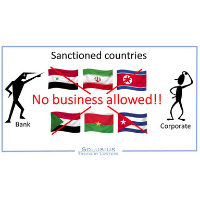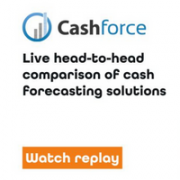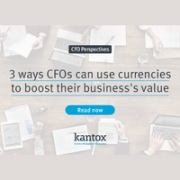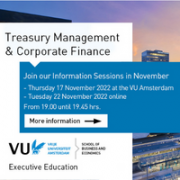Managing treasury risk: Commodity Risk (Part IV)
| 14-2-2017 | Lionel Pavey |
There are lots of discussions concerning risk, but let us start by trying to define what we mean by risk. In my fourth article I will write about commodity risk, what the strategies around commodities are and how to build a commodity risk framework. More information about my first three articles can be found at the end of today’s article.
Commodity Risk
Commodity risk occurs due to changes in price, quantity, quality and politics with regard to the underlying commodities. This can refer to both the commodity as a whole and an input component of a finished good. Commodity risk usually refers to the risk in a physical product, but also occurs in products like electricity. It can affect producers, suppliers and buyers.
Traditionally, commodity price risk was managed by the purchasing department. Here the emphasis was placed on the price – the lower the price, the better. But price is only one component of commodity risk. Price changes can either be observed directly in the commodity or indirectly when the commodity is an input in the finished product.
Availability, especially of energy, is crucial for any company to be able to undertake operations. Combining commodity risk over both Treasury and Purchasing allows these 2 departments to work closer and build a better understanding of the risks involved. It also allows for a comprehensive view of the whole supply chain within a company. A product like electricity is dependent on the input source of production – gas, petroleum, coal, wind, climate – as well as the price and supply of electricity itself.
There are many factors that can determine commodities prices – supply and demand, production capacity, storage, transport. As such it is not as easy to design the risk management model as it is for financial products.
General strategies that can be implemented
- Acceptance
- Avoidance
- Contract hedging
- Correlated hedging
Acceptance
Acceptance would mean that the risk exposure would be unchanged. The company would then absorb all price increases and attempt to pass the increase on when selling the finished product.
Avoidance
Avoidance and/or minimizing means substituting or decreasing the use of certain input components.
Contract hedging
Contract hedging means using financial products related to the commodity, such as options and futures as well as swapping price agreements.
Correlated hedging
Correlated hedging means examining the exposure of a commodity – the price of crude oil is always quoted in USD – and taking a hedge in the USD as opposed to the crude oil itself. The 2 products are correlated to a certain extent, though not fully.
Commodity risk framework
Commodity price speculation – most contracts are settled by physical delivery – affects the market more than price speculation in currency markets.
To build a commodity risk framework, attention needs to given to the following:
- Identify the risks
- Measure the exposure
- Identify hedging products
- Examine the market
- Delegate the responsibility factors within the organization
- Involve management and the Board of Directors
- Perform analytics on identified positions
- Consider the accounting issues
- Create a team
- Are there system requirements needed
Problems can arise because of the following:
- Relevant information is dispersed throughout the company
- Management may not be aligned to the programme
- Quantifying exposure can be difficult
- There is no natural hedge for the exposure
- Design of reports and KPI’s can be complex
It requires an integrated commitment from diverse departments and management to understand and implement a robust, concise policy – but this should not be a hindrance to running the policy.

Cash Management and Treasury Specialist
More articles of this series:
Managing treasury risk: Risk management
Managing treasury risk: Interest rate risk
Managing treasury risk: Foreign exchange risk











